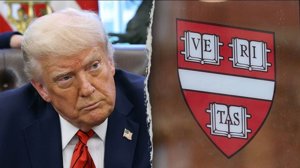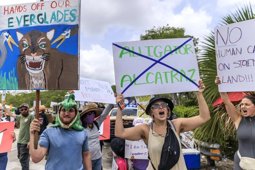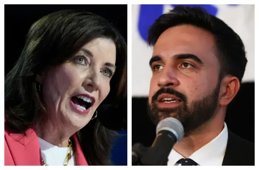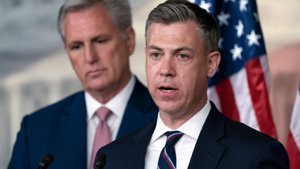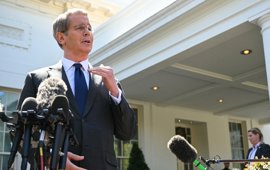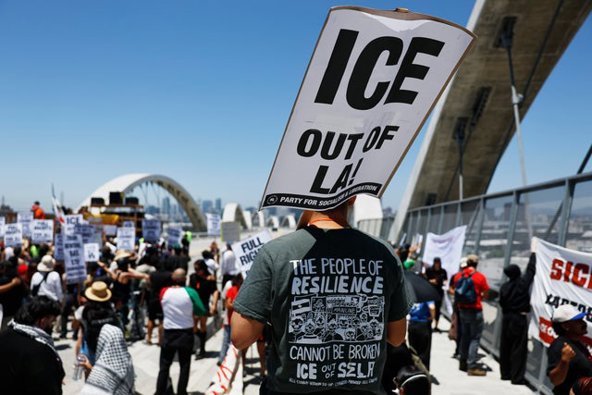
Judge Restricts ICE Operations Amid California Immigration Tensions
Federal judge limits ICE operations in California, citing rights violations, as Trump officials defend aggressive enforcement.
Judge Issues Sweeping Restraints on ICE in California
A federal judge in Los Angeles issued a sweeping temporary restraining order late Friday against Immigration and Customs Enforcement (ICE), sharply restricting the agency’s immigration enforcement operations in California. U.S. District Judge Maame Ewusi-Mensah Frimpong, appointed by President Biden, ruled that ICE likely violated constitutional protections and barred agents from conducting detentive stops unless they have “reasonable suspicion” an individual is in the country unlawfully.
The 53-page order specifically prohibits ICE from relying solely on race, ethnicity, language, location, or type of work to form suspicion, referencing the Fourth Amendment. ICE must now keep detailed records for every stop, turn those records over to the court, develop clear guidance for agents, and implement mandatory training.
The case, which began in June as a petition from three detainees, has grown into a major legal challenge to ICE’s tactics under the Trump administration. Plaintiffs allege that ICE has been “indiscriminately” arresting people based on skin color and location—such as Home Depots, car washes, and farms—sometimes mistakenly detaining U.S. citizens and violating the Fourth Amendment. They argue that Trump’s aggressive deportation targets, including an alleged quota of 3,000 arrests per day, have led to widespread constitutional violations.
Federal Authorities Defend Enforcement Amid Violent Clashes
As the legal battle unfolds, President Donald Trump doubled down on his administration’s approach. After ICE agents encountered violence during recent raids at cannabis farms in California—where officers were hit with rocks and bricks—Trump granted “total authorization” for ICE to protect themselves and arrest anyone attacking federal officers. “I am giving Total Authorization for ICE to protect itself, just like they protect the Public,” Trump wrote on social media, instructing law enforcement to arrest offenders “using whatever means is necessary.”
Trump’s top border official, Tom Homan, defended ICE’s conduct, blasting what he called “fake stories” and “extreme rhetoric” from Democratic leaders and the media. Homan warned that inflammatory language is fueling confrontations, and urged that protests not impede law enforcement’s duties. He noted, “They can’t impede us from doing our job. That’s a felony. They certainly can’t put hands on an agent. That’s a felony.”
Homan and other administration officials emphasized that ICE has rescued thousands of missing and trafficked minors and argued that core enforcement should be nonpartisan. “Rescuing children... should be a nonpartisan issue,” Homan said, insisting ICE’s mission is misunderstood and misrepresented for political gain.
Meanwhile, California leaders—including Governor Gavin Newsom and Los Angeles Mayor Karen Bass—praised the court’s order, accusing the Trump administration of “reckless” and “unconstitutional” raids and vowing to protect local communities. Newsom and Bass have been highly critical of federal actions, arguing that mass enforcement is harming residents and stoking fear among immigrant communities.
Debate Over Enforcement, Rights, and the Role of ICE Continues
Federal attorneys maintain that ICE’s arrests have been conducted legally, noting that occupation and location are only part of a “totality of circumstances” analysis. U.S. Attorney Bill Essayli disputed the lawsuit’s allegations, stating, “We strongly disagree... and maintain that our agents have never detained individuals without proper legal justification.”
The court order also requires ICE to ensure immediate legal access for detainees at facilities where access to attorneys was allegedly hindered. The restraining order remains in effect pending further litigation, leaving the future of immigration enforcement in California uncertain as national debate intensifies.
As legal proceedings advance, both sides prepare for ongoing court battles that will help define the boundaries between public safety, constitutional rights, and the authority of federal immigration agencies. The case underscores the deep divisions over immigration enforcement and civil liberties in the current political climate.

